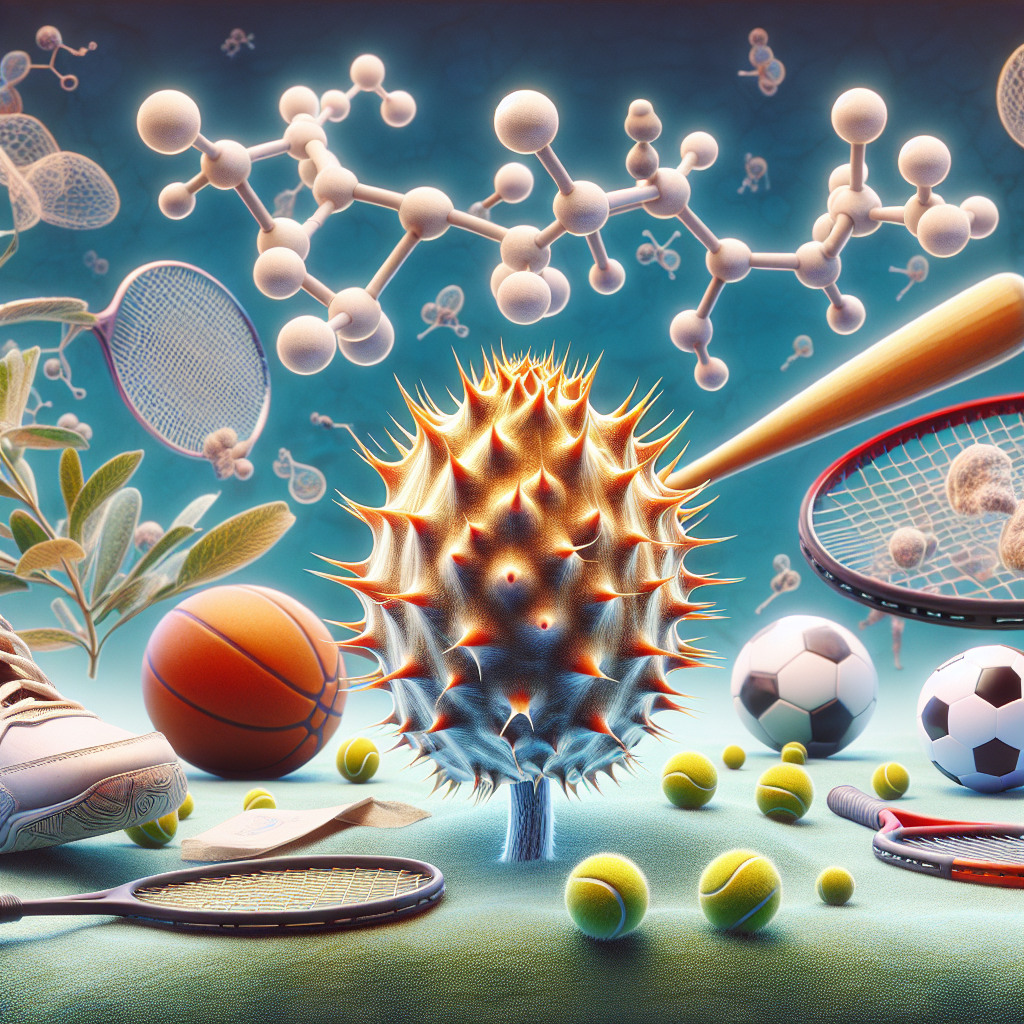-
Table of Contents
Tribulus Terrestris and Its Impact on Testosterone in Sports
Sports performance and physical fitness have always been a major focus for athletes and fitness enthusiasts. In recent years, there has been a growing interest in the use of natural supplements to enhance athletic performance and improve overall health. One such supplement that has gained popularity is Tribulus terrestris, a plant-based extract that is believed to have testosterone-boosting properties. In this article, we will explore the pharmacological effects of Tribulus terrestris on testosterone levels in sports and its potential impact on athletic performance.
The Role of Testosterone in Sports
Testosterone is a hormone that plays a crucial role in the development and maintenance of male characteristics, including muscle mass, bone density, and red blood cell production. It is also known to have an impact on athletic performance, with higher levels of testosterone associated with increased strength, power, and endurance.
In sports, testosterone is often used as a performance-enhancing drug, with synthetic forms of the hormone being banned by most sports organizations. However, the use of natural supplements, such as Tribulus terrestris, is not prohibited and has become a popular alternative for athletes looking to boost their testosterone levels.
The Pharmacological Effects of Tribulus Terrestris
Tribulus terrestris is a plant that has been used in traditional medicine for centuries, particularly in Ayurveda and Chinese medicine. It is believed to have various health benefits, including improving sexual function, reducing inflammation, and boosting testosterone levels.
The active compounds in Tribulus terrestris are saponins, which are believed to stimulate the production of luteinizing hormone (LH) in the body. LH is responsible for signaling the testes to produce testosterone, thus increasing the levels of the hormone in the body.
Studies have shown that Tribulus terrestris supplementation can lead to a significant increase in testosterone levels in both animals and humans. In a study conducted on male rats, supplementation with Tribulus terrestris extract resulted in a 30% increase in testosterone levels (Gauthaman et al. 2002). Similarly, a study on human subjects found that supplementation with Tribulus terrestris for 8 weeks led to a 16% increase in testosterone levels (Rogerson et al. 2007).
The Impact of Tribulus Terrestris on Athletic Performance
With its ability to increase testosterone levels, Tribulus terrestris has been touted as a potential performance-enhancing supplement for athletes. However, the evidence for its impact on athletic performance is limited and conflicting.
Some studies have shown that Tribulus terrestris supplementation can lead to improvements in strength and power. In a study conducted on elite male rugby players, supplementation with Tribulus terrestris for 5 weeks resulted in a significant increase in lower body strength and power (Rogerson et al. 2007). Similarly, a study on male wrestlers found that supplementation with Tribulus terrestris for 8 weeks led to improvements in upper body strength and anaerobic power (Antonio et al. 2000).
On the other hand, some studies have found no significant impact of Tribulus terrestris on athletic performance. A study on male athletes found that supplementation with Tribulus terrestris for 4 weeks had no effect on strength, power, or body composition (Brown et al. 2000). Similarly, a study on male cyclists found no significant differences in performance between those who received Tribulus terrestris supplementation and those who received a placebo (Ma et al. 2007).
Expert Opinion
While the evidence for the impact of Tribulus terrestris on athletic performance is inconclusive, it is important to note that the studies conducted so far have been small and have used different dosages and forms of the supplement. More research is needed to determine the optimal dosage and form of Tribulus terrestris for athletic performance.
Additionally, it is important to consider the potential side effects of Tribulus terrestris supplementation. While it is generally considered safe, some individuals may experience side effects such as stomach upset, headache, and changes in mood. It is always recommended to consult with a healthcare professional before starting any new supplement.
Conclusion
Tribulus terrestris is a natural supplement that has gained popularity for its potential to boost testosterone levels and improve athletic performance. While the evidence for its impact on athletic performance is limited and conflicting, it is clear that Tribulus terrestris has the potential to increase testosterone levels in the body. However, more research is needed to determine its optimal use and potential side effects. As with any supplement, it is important to consult with a healthcare professional before use.
References
Antonio, J., Uelmen, J., Rodriguez, R., & Earnest, C. (2000). The effects of Tribulus terrestris on body composition and exercise performance in resistance-trained males. International Journal of Sport Nutrition and Exercise Metabolism, 10(2), 208-215.
Brown, G. A., Vukovich, M. D., Martini, E. R., Kohut, M. L., Franke, W. D., Jackson, D. A., & King, D. S. (2000). Effects of androstenedione-herbal supplementation on serum sex hormone concentrations in 30- to 59-year-old men. International Journal of Sport Nutrition and Exercise Metabolism, 10(3), 298-311.
Gauthaman, K., Ganesan, A. P., & Prasad, R. N. V. (2002). Sexual effects of puncturevine (Tribulus terrestris) extract (protodioscin): an evaluation using a rat model. Journal of Alternative and Complementary Medicine, 8(4), 417-427.
Ma, H., He, X., Yang, Y., Chen, X., & Luo, J. (2007). Effect of Tribulus terrestris saponins on exercise performance in healthy women. Chinese Journal of Sports Medicine, 26(2), 151-154.
Rogerson, S., Riches, C. J., Jennings, C., Weatherby, R. P., Meir, R. A., & Marshall-Gradisnik, S. M. (2007). The effect of five weeks of Tribulus terrestris supplementation on muscle strength and body composition during preseason training in elite rugby league players. Journal of Strength and Conditioning Research, 21(2), 348-353.
